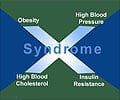Adults who live in greener neighborhoods have a lower chance of developing metabolic syndrome than those living in areas with less exposure to greenery.
- Middle-aged and older adults living in greener neighborhoods are at lower risk of developing metabolic syndrome
- They have a better metabolic response and are on the //safe side than those living in areas with less green spaces
Read More..
The longitudinal study, published in Environmental Pollution, used data from over 6,000 adults -aged between 45 and 69 at the start of the study- from the Whitehall II cohort from the UK. Participants underwent four examinations over a period of 14 years (1997-2013), with a series of tests including blood analysis, blood pressure, and waist circumference measurements. Residential greenness was determined by satellite images.
These findings suggest that long-term exposure to green spaces can play an important role in preventing metabolic syndrome as a whole, as well as individual components such as large waist circumference, high levels of blood fats or hypertension.
The mechanisms underlying this association "could be related to better opportunities provided by green spaces to perform the physical activity as well as a decrease in exposure to air pollution," explains Carmen de Keijzer, ISGlobal researcher and first author of the study. The association observed was higher for women than for men. "Women tend to spend more time in their residential neighborhood, which could explain this gender difference," adds the researcher.
"The study found more health benefits in those areas with higher tree coverage, which provides a basis for investigating the types of vegetation that impact positively on our health," says Payam Dadvand, ISGlobal researcher and last author of the study.
Source-Eurekalert










